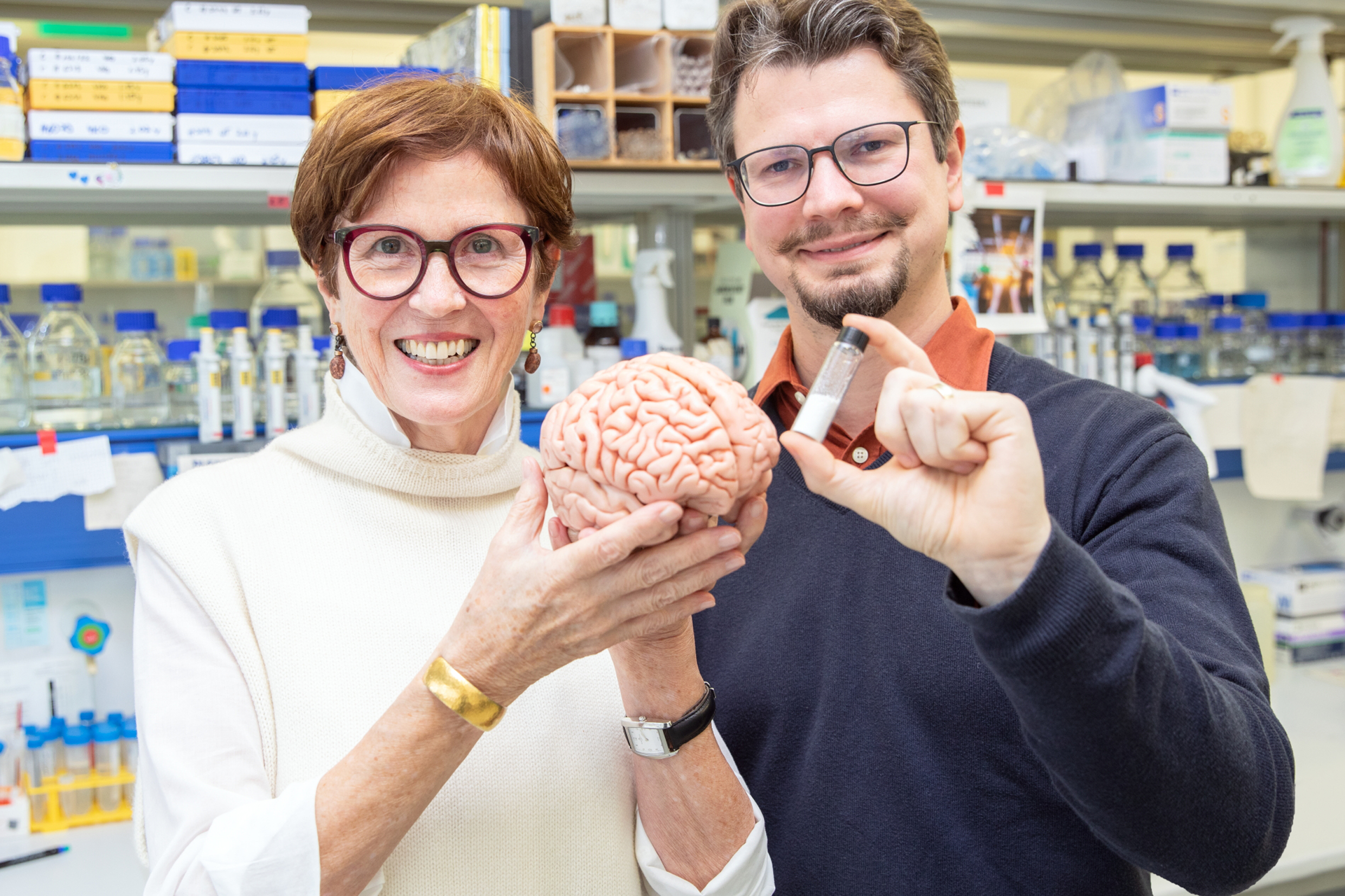Funded with 1.1 million euros: MHH project investigates how the body's own polysialic acid can be used to combat neurodegenerative processes.

Tackling dementia with sugar: Professor Dr Rita Gerardy-Schahn and Dr Hauke Thiesler want to use polysialic acid to improve the signal transmission of nerve cells in the brain. Copyright: Karin Kaiser/MHH.
The risk of neurodegenerative diseases increases with age. This term covers a range of diseases that impair either the physical or mental abilities of those affected. These include Alzheimer's and other dementias, which affect an estimated 1.8 million people in Germany alone. And between 360,000 and 440,000 new cases are added every year. The cause is changes in the brain in which nerve cells die or communication between neurones is disrupted. Treatment options are limited and there is no cure. A research team from the Institute of Clinical Biochemistry at Hannover Medical School (MHH) has discovered that the body's own sugar compound polysialic acid (PolySia) could help combat neurodegenerative processes. In a joint project led by Dr Hauke Thiesler, the researchers are now investigating how PolySia can be used to specifically counteract neurodegenerative diseases such as dementia. The "CogniSia" project in cooperation with the "Molecular Neuroplasticity" research group at the German Centre for Neurodegenerative Diseases in Magdeburg is being funded by the Federal Ministry of Education and Research for two years with 1.1 million euros.
Transmitting information in a targeted manner
"Sialic acids are key components of many cellular communication processes and are indispensable for the development and function of our nervous system," says Professor Dr Rita Gerardy-Schahn, the former head of the MHH Institute. In the brain, PolySia also acts in the hippocampus - a kind of switchboard between short-term and long-term memory - and the prefrontal cortex, responsible for higher cognitive functions, including language, memory, problem-solving and judgement. In these areas of the brain, the sugar polymer plays a key role in regulating the transmission of information from one nerve to the next. This process is impaired in dementia patients.
However, the sugar compound PolySia occurs in the brain in a variety of different lengths. Until now, it was unclear whether these also have different functions. The research team is focussing on the short-chain polymers, for which it has been shown that they play an important role in the so-called synaptic cleft. Messenger substances that bind to specific receptor molecules are released into this narrow space between two nerve endings. PolySia ensures that the messenger substances dock onto the correct binding sites in the centre of the synapse. "In this way, a strong signal is transmitted to the next nerve," explains Professor Gerardy-Schahn. This is achieved by the sugar polymer blocking binding sites at the edge of the synapse. If the messenger substances were to dock there too, a kind of interference fire would be created and the signal for the information would weaken. The concentration of PolySia in the brain decreases with age. "In people with neurodegenerative diseases, the level is even lower," says Dr Thiesler. "This promotes impaired signal transmission at the nerve junctions." The consequences are forgetfulness and dementia.
In preliminary studies, the research team was already able to show in a mouse model of Alzheimer's disease that short-chain PolySia of a very specific length was able to increase brain performance. "We observed that even a single administration of PolySia was enough to stop the interference firing and significantly improve the memory function," emphasises Dr Thiesler. Studies using a fluorescence microscope also confirmed that the PolySia administered via the nose actually reaches the brain of the mice. In their project, the researchers now want to investigate the mechanisms of action of PolySia in molecular detail.
Production platform for efficient manufacturing
Another aim is to establish an efficient production platform so that the effective size of PolySia can be produced in sufficient quantities and at low cost. To this end, the researchers have biotechnologically developed the enzyme that can link the single sugar sialic acid to PolySia so that the desired chain length is primarily produced. "We also obtain a chemically ultra-pure product without waste and in sufficient quantities," explains the biochemist. The application and the isolation process have already been patented The next step for the researchers is to confirm the effect in human cell cultures. "We could then enter the clinical phase," hopes Dr Thiesler.
If everything works as expected, a PolySia nasal spray could be launched on the market in a few years' time, helping to mitigate dementia and protect people at risk from dementia for as long as possible so that they can live independently for as long as possible.
Text: Kirsten Pötzke